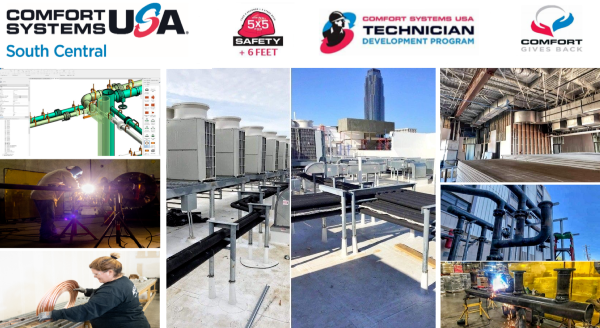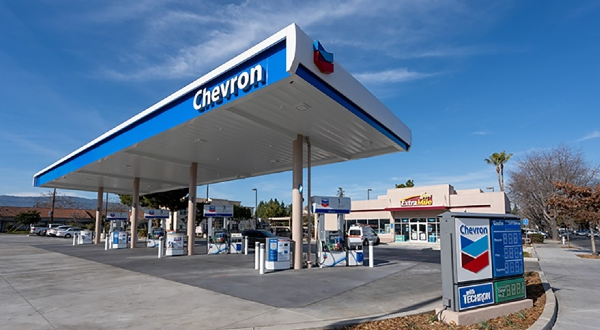What is the Difference Between Materials and Commodities?
Understanding the distinction between materials and commodities is crucial for investors and businesses alike, as both play significant roles in production and the economy.
Commodities
Commodities are raw materials that are either grown or mined. They serve as the essential building blocks for all other products, making them foundational to global trade. Commodities have intrinsic value and are interchangeable, meaning one unit of a commodity is equivalent to another unit of the same commodity, regardless of origin. Examples include crude oil, gold, and wheat. As the foundation of the global economy, commodities drive industries and influence market dynamics.
Materials
Materials refer to the matter from which things are made, such as wood, metal, or plastics. Unlike commodities, materials can be raw or processed, depending on their use. Materials are often integral to the creation of commodities or finished products. For instance, steel is a material derived from iron ore—a commodity—and is used in manufacturing. Materials are essential for production and manufacturing processes, enabling the transformation of raw commodities into usable goods.
By distinguishing between these two categories, investors and manufacturers can better understand supply chains, pricing strategies, and the drivers behind economic trends.
Key Differences Between Commodities and Materials: Standardization vs. Differentiation
Understanding the distinction between standardization and differentiation is critical when comparing commodities and materials, as these concepts shape their roles in industries and markets.
Standardization: Commodities
Commodities are inherently standardized, meaning they possess uniform quality and characteristics regardless of origin. This standardization ensures that one unit of a commodity, such as a barrel of crude oil or a bushel of wheat, is interchangeable with another. This feature makes commodities easily tradable in global markets and serves as a foundation for price transparency and liquidity.
Differentiation: Materials
In contrast, materials are often differentiated, featuring unique qualities that vary depending on their processing, source, or intended use. For instance, steel and aluminum—both considered materials—can have diverse grades, finishes, or compositions tailored to specific applications. Differentiation adds value to materials, as it allows manufacturers to meet specific requirements for production, design, or performance.
By recognizing these key differences, businesses and investors can better navigate supply chains, pricing strategies, and market opportunities while understanding the specific value drivers of each category.
What Are the Types of Commodities?
Commodities can be broadly categorized into two types: soft commodities and hard commodities. Understanding these distinctions is essential for investors and industries, as they influence market dynamics and production processes.
Soft Commodities
Soft commodities are agricultural products that are grown rather than mined. These include items like corn, wheat, and soybeans, which have a limited shelf life due to their perishable nature. Soft commodities are renewable, meaning they can be replanted and replaced after harvest. Common examples of soft commodities include coffee, sugar, and cocoa, all of which play a vital role in global trade and consumer markets.
Hard Commodities
Hard commodities, on the other hand, consist of non-renewable materials such as minerals and metals. Unlike soft commodities, hard commodities are mined and have a long shelf life, making them suitable for long-term storage and trade. This category includes oil, gas, and precious metals like gold and silver, as well as industrial materials like copper, iron, and coal. Hard commodities are essential for infrastructure, energy, and manufacturing industries, driving economic growth and innovation.
By distinguishing between soft and hard commodities, investors and businesses can gain valuable insights into global supply chains, pricing trends, and market opportunities.
Energy Commodities
Energy commodities, a subset of hard commodities, play a critical role in powering industries and daily life. These non-renewable resources are consumed upon use, highlighting their finite nature and global importance. Examples of energy commodities include oil, natural gas, and coal, all of which are foundational to energy production and economic activity.
Traded on major exchanges such as the New York Mercantile Exchange (NYMEX), energy commodities are integral to global trade and financial markets. Their prices are influenced by factors like supply and demand, geopolitical events, and environmental considerations, making them a key area of focus for investors and policymakers.
Understanding energy commodities is vital for navigating market trends and appreciating their impact on economic growth and sustainability.
Commodities in the Market
Commodity trading forms the backbone of global financial markets, enabling the buying and selling of essential resources that power economies. Commodities can be traded directly or through futures contracts, which are agreements to buy or sell a commodity at a predetermined price on a future date. These contracts provide stability and predictability in volatile markets, benefiting both producers and investors.
Major exchanges, such as the Chicago Board of Trade (CBOT), facilitate the trading of commodities. These platforms enable market participants to access a diverse range of products, including agricultural goods, energy resources, and metals. Factors like supply, demand, and geopolitical events often influence commodity prices, making trading both dynamic and strategic.
Products vs. Commodities
Understanding the distinction between products and commodities is essential for businesses and investors navigating the value chain.
Commodities
Commodities are raw materials, such as crude oil, gold, and wheat, that serve as the foundation for creating finished goods. They are fungible, meaning one unit of a commodity is interchangeable with another unit of the same type, regardless of its source. This uniformity simplifies trading and pricing in global markets.
Products
Products, on the other hand, are finished goods created by adding value to commodities through manufacturing or processing. Unlike commodities, products are differentiated by branding, quality, and unique features tailored to meet consumer demands. For example, crude oil—a commodity—can be refined into gasoline, a product, that is then marketed under various brands with distinct qualities.
Recognizing these differences helps investors, producers, and consumers understand the value-added processes and market dynamics that distinguish commodities from finished products.
Conclusion
Commodities and materials are foundational elements of the global economy, each serving unique purposes in production, trade, and value creation. Commodities, with their standardization and fungibility, play a pivotal role in global trade, driving industries from agriculture to energy and precious metals. Materials, on the other hand, are distinguished by their versatility and differentiation, making them essential for manufacturing and innovation.
Understanding the distinctions between commodities and materials, as well as concepts like standardization versus differentiation, and the value chain from raw resources to finished products, equips businesses and investors with the insights needed to navigate market dynamics effectively. By recognizing the nuances in these categories, one can make informed decisions that align with industry trends and economic opportunities.





























What is the Difference Between Materials and Commodities?
Understanding the distinction between materials and commodities is crucial for investors and businesses alike, as both play significant roles in production and the economy.
Commodities
Commodities are raw materials that are either grown or mined. They serve as the essential building blocks for all other products, making them foundational to global trade. Commodities have intrinsic value and are interchangeable, meaning one unit of a commodity is equivalent to another unit of the same commodity, regardless of origin. Examples include crude oil, gold, and wheat. As the foundation of the global economy, commodities drive industries and influence market dynamics.
Materials
Materials refer to the matter from which things are made, such as wood, metal, or plastics. Unlike commodities, materials can be raw or processed, depending on their use. Materials are often integral to the creation of commodities or finished products. For instance, steel is a material derived from iron ore—a commodity—and is used in manufacturing. Materials are essential for production and manufacturing processes, enabling the transformation of raw commodities into usable goods.
By distinguishing between these two categories, investors and manufacturers can better understand supply chains, pricing strategies, and the drivers behind economic trends.
Key Differences Between Commodities and Materials: Standardization vs. Differentiation
Understanding the distinction between standardization and differentiation is critical when comparing commodities and materials, as these concepts shape their roles in industries and markets.
Standardization: Commodities
Commodities are inherently standardized, meaning they possess uniform quality and characteristics regardless of origin. This standardization ensures that one unit of a commodity, such as a barrel of crude oil or a bushel of wheat, is interchangeable with another. This feature makes commodities easily tradable in global markets and serves as a foundation for price transparency and liquidity.
Differentiation: Materials
In contrast, materials are often differentiated, featuring unique qualities that vary depending on their processing, source, or intended use. For instance, steel and aluminum—both considered materials—can have diverse grades, finishes, or compositions tailored to specific applications. Differentiation adds value to materials, as it allows manufacturers to meet specific requirements for production, design, or performance.
By recognizing these key differences, businesses and investors can better navigate supply chains, pricing strategies, and market opportunities while understanding the specific value drivers of each category.
What Are the Types of Commodities?
Commodities can be broadly categorized into two types: soft commodities and hard commodities. Understanding these distinctions is essential for investors and industries, as they influence market dynamics and production processes.
Soft Commodities
Soft commodities are agricultural products that are grown rather than mined. These include items like corn, wheat, and soybeans, which have a limited shelf life due to their perishable nature. Soft commodities are renewable, meaning they can be replanted and replaced after harvest. Common examples of soft commodities include coffee, sugar, and cocoa, all of which play a vital role in global trade and consumer markets.
Hard Commodities
Hard commodities, on the other hand, consist of non-renewable materials such as minerals and metals. Unlike soft commodities, hard commodities are mined and have a long shelf life, making them suitable for long-term storage and trade. This category includes oil, gas, and precious metals like gold and silver, as well as industrial materials like copper, iron, and coal. Hard commodities are essential for infrastructure, energy, and manufacturing industries, driving economic growth and innovation.
By distinguishing between soft and hard commodities, investors and businesses can gain valuable insights into global supply chains, pricing trends, and market opportunities.
Energy Commodities
Energy commodities, a subset of hard commodities, play a critical role in powering industries and daily life. These non-renewable resources are consumed upon use, highlighting their finite nature and global importance. Examples of energy commodities include oil, natural gas, and coal, all of which are foundational to energy production and economic activity.
Traded on major exchanges such as the New York Mercantile Exchange (NYMEX), energy commodities are integral to global trade and financial markets. Their prices are influenced by factors like supply and demand, geopolitical events, and environmental considerations, making them a key area of focus for investors and policymakers.
Understanding energy commodities is vital for navigating market trends and appreciating their impact on economic growth and sustainability.
Commodities in the Market
Commodity trading forms the backbone of global financial markets, enabling the buying and selling of essential resources that power economies. Commodities can be traded directly or through futures contracts, which are agreements to buy or sell a commodity at a predetermined price on a future date. These contracts provide stability and predictability in volatile markets, benefiting both producers and investors.
Major exchanges, such as the Chicago Board of Trade (CBOT), facilitate the trading of commodities. These platforms enable market participants to access a diverse range of products, including agricultural goods, energy resources, and metals. Factors like supply, demand, and geopolitical events often influence commodity prices, making trading both dynamic and strategic.
Products vs. Commodities
Understanding the distinction between products and commodities is essential for businesses and investors navigating the value chain.
Commodities
Commodities are raw materials, such as crude oil, gold, and wheat, that serve as the foundation for creating finished goods. They are fungible, meaning one unit of a commodity is interchangeable with another unit of the same type, regardless of its source. This uniformity simplifies trading and pricing in global markets.
Products
Products, on the other hand, are finished goods created by adding value to commodities through manufacturing or processing. Unlike commodities, products are differentiated by branding, quality, and unique features tailored to meet consumer demands. For example, crude oil—a commodity—can be refined into gasoline, a product, that is then marketed under various brands with distinct qualities.
Recognizing these differences helps investors, producers, and consumers understand the value-added processes and market dynamics that distinguish commodities from finished products.
Conclusion
Commodities and materials are foundational elements of the global economy, each serving unique purposes in production, trade, and value creation. Commodities, with their standardization and fungibility, play a pivotal role in global trade, driving industries from agriculture to energy and precious metals. Materials, on the other hand, are distinguished by their versatility and differentiation, making them essential for manufacturing and innovation.
Understanding the distinctions between commodities and materials, as well as concepts like standardization versus differentiation, and the value chain from raw resources to finished products, equips businesses and investors with the insights needed to navigate market dynamics effectively. By recognizing the nuances in these categories, one can make informed decisions that align with industry trends and economic opportunities.